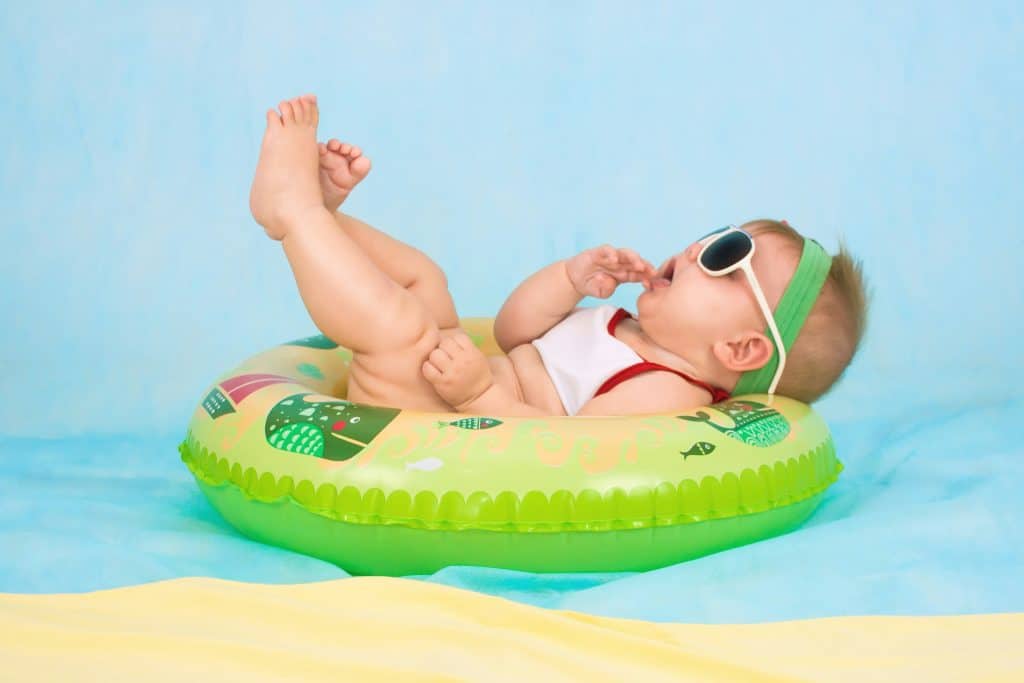If you’re a new parent, you’ve probably heard about the dreaded diaper rash. It’s a common concern for many parents, but the good news is that it’s preventable and treatable. In this article, we’ll explore the causes and symptoms of diaper rash in newborns, as well as provide you with practical tips on how to keep your baby’s bottom rash-free and comfortable. From choosing the right diapers to implementing proper hygiene practices, we’ve got you covered. So, let’s dive into the world of diaper rash and ensure that your little one stays happy and rash-free.
What is diaper rash?

This image is property of images.unsplash.com.
Definition of diaper rash
Diaper rash is a common condition characterized by redness, irritation, and inflammation in the diaper area of infants and young children. It is often caused by prolonged exposure to moisture, friction, and the irritating substances found in urine and feces. Diaper rash typically appears as a flat or raised rash on the baby’s buttocks, genital area, and thighs, and can cause discomfort and distress for both the baby and the parents.
Causes of diaper rash
Diaper rash can be caused by various factors, including:
-
Prolonged exposure to moisture: When a baby’s skin is constantly exposed to moisture from urine and feces, it becomes more susceptible to irritation and inflammation. Moisture can break down the protective barrier of the skin, leading to the development of diaper rash.
-
Friction: The constant rubbing of a diaper against the baby’s sensitive skin can cause friction and irritation, especially if the diaper is too tight or if the baby is frequently moving or active.
-
Irritating substances in urine and feces: Urine and feces contain natural substances, such as ammonia and enzymes, which can irritate the baby’s delicate skin and contribute to diaper rash. Newborns, in particular, have more frequent bowel movements, which increases the risk of developing diaper rash.
-
Allergic reactions: Some babies may have sensitive skin that reacts to certain substances in diapers, wipes, or detergents. These allergic reactions can lead to diaper rash and should be identified and addressed accordingly.
Common symptoms of diaper rash
Diaper rash can manifest in different ways, but some of the most common symptoms include:
-
Redness: The affected area may appear red, irritated, and inflamed. The severity of the redness can vary depending on the extent of the rash.
-
Raised bumps or blisters: In some cases, the rash may develop raised bumps, blisters, or sores. These can be painful and may require medical attention.
-
Dry, flaky skin: The skin in the diaper area may become dry and flaky, indicating the presence of diaper rash.
-
Soreness and discomfort: Diaper rash can cause significant discomfort for the baby, making them fussy or irritable. The affected area may also be sensitive to touch.
-
Spreading or worsening of the rash: If left untreated, diaper rash can spread and worsen over time. It is important to address the rash promptly to prevent further complications.
Understanding the risk factors
Factors that increase the likelihood of diaper rash
While diaper rash can occur in any baby, certain factors can increase the likelihood of its development. These include:
-
Moisture and lack of air circulation: Babies who wear wet or soiled diapers for extended periods are more susceptible to diaper rash. Similarly, diapers that do not allow for proper air circulation can create a moist environment that promotes the growth of bacteria and yeast.
-
Infrequent diaper changes: Not changing a baby’s diaper frequently enough can lead to prolonged exposure to urine and feces, increasing the risk of developing diaper rash. Regular diaper changes are essential for maintaining a clean and dry diaper area.
-
Irritating products and materials: Some diapers, wipes, and detergents may contain chemicals or fragrances that can irritate a baby’s sensitive skin and contribute to the development of diaper rash. Using gentle, hypoallergenic products can help minimize this risk.
Age-related risk factors
Newborns are more prone to diaper rash due to several factors:
-
Frequent bowel movements: Newborns typically have frequent bowel movements, which means their diaper area is exposed to stool more often. This increases the risk of diaper rash development.
-
Delicate skin: The delicate skin of newborns is more prone to irritation and inflammation. The protective barrier of their skin is not yet fully developed, making it more vulnerable to the irritating substances found in urine and feces.
-
Diapering practices: New parents may take some time to perfect their diapering technique. Improper diapering, such as securing the diaper too tightly or loosely, can contribute to diaper rash development in newborns.
Environmental risk factors
Environmental factors can also play a role in the development of diaper rash. These include:
-
Humidity: High humidity levels can lead to increased moisture in the diaper area, exacerbating the risk of diaper rash. In hot and humid climates, taking extra precautions to keep the diaper area dry can help prevent diaper rash.
-
Allergens and irritants in the surroundings: Certain substances, such as harsh laundry detergents, cleaning products, or fabrics, can irritate a baby’s sensitive skin and contribute to diaper rash. Identifying and avoiding these potential irritants can help minimize the risk of diaper rash.
Importance of proper diapering
Choosing the right diapers
When it comes to preventing diaper rash, choosing the right diapers can make a significant difference. Look for diapers that are breathable, gentle on the skin, and have a high absorbency rate. Consider opting for hypoallergenic and fragrance-free diapers to minimize the risk of skin irritation.
Changing diapers frequently
Frequent diaper changes are crucial in preventing diaper rash. Regularly check your baby’s diaper and change it as soon as it becomes wet or soiled. Avoid leaving a baby in a wet or dirty diaper for extended periods, as this can irritate the skin and contribute to diaper rash development.
Using gentle cleansers and wipes
When cleaning your baby’s diaper area, opt for gentle cleansers or wipes specifically designed for sensitive skin. Avoid using products that contain fragrances, alcohol, or other potential irritants. Gently pat the skin dry with a soft cloth or towel after cleaning.
Allowing for diaper-free time
To help prevent diaper rash, allow your baby to have some diaper-free time each day. This allows the skin to breathe and helps reduce moisture and friction, both of which can contribute to diaper rash. Place a waterproof pad or towel under your baby to protect surfaces from potential messes.
Preventing diaper rash
Keeping the diaper area clean and dry
To prevent diaper rash, the diaper area should be kept clean and dry. After each diaper change, gently clean the area with mild cleanser or wipes and pat it dry with a soft cloth or towel. Avoid rubbing the skin, as this can cause further irritation.
Using diaper rash creams or ointments as a preventive measure
Applying a thin layer of diaper rash cream or ointment to your baby’s clean and dry skin can act as a protective barrier against moisture and irritants. Look for products that contain zinc oxide or petroleum jelly, as these ingredients help soothe and protect the skin.
Avoiding the use of talcum powder
Talcum powder is no longer recommended as a preventive measure for diaper rash. The fine particles of talc can be harmful if inhaled, and there is a risk of it irritating the baby’s lungs and causing respiratory issues. Instead, focus on keeping the diaper area clean, dry, and properly moisturized.
Using barrier creams or ointments for added protection
If your baby is susceptible to diaper rash or has had a previous episode, consider using a barrier cream or ointment with each diaper change. These products help create a protective barrier between the skin and moisture, reducing the risk of diaper rash.

This image is property of images.unsplash.com.
Avoiding excessive tightness in diapers
While it is important to ensure that the diaper fits snugly, it should not be so tight that it restricts air circulation or causes discomfort. Tight diapers can exacerbate friction and prevent proper moisture evaporation, increasing the risk of diaper rash. Ensure that the diaper is secure but not overly tight.
Home remedies for diaper rash
Using plain water for cleansing
In some cases, plain water can be an effective alternative to using cleansers or wipes. Fill a basin or sink with lukewarm water and gently wash your baby’s diaper area with your hand or a soft cloth. Pat the skin dry thoroughly before putting on a clean diaper.
Applying petroleum jelly or coconut oil
Petroleum jelly and coconut oil can help soothe and protect the skin in the diaper area. After cleaning the diaper area, apply a thin layer of petroleum jelly or coconut oil to act as a barrier against moisture and irritants.
Using cornstarch or baking soda for natural relief
Cornstarch or baking soda can offer natural relief for diaper rash. Sprinkle a small amount of cornstarch or baking soda onto your baby’s clean and dry skin, focusing on the areas prone to diaper rash. These substances can help absorb moisture and reduce friction.
Trying oatmeal or yogurt baths
Oatmeal and yogurt baths can provide relief for babies with diaper rash. Add a cup of finely ground oatmeal or a tablespoon of plain, unsweetened yogurt to lukewarm bathwater. Let your baby soak in the bath for 10 to 15 minutes, then gently pat the skin dry.
Using chamomile tea compresses
Chamomile tea is known for its soothing properties and can provide relief for diaper rash. Brew a cup of chamomile tea, let it cool, and then soak a clean cloth or cotton pad in the tea. Apply the compress to the affected area for a few minutes, then gently dry the skin.
Seeking medical advice
When to consult a doctor
While most cases of diaper rash can be treated at home, there are situations where seeking medical advice is necessary. Contact your pediatrician if:
- The rash becomes severe, spreads rapidly, or does not improve within a few days of home treatment.
- The rash is accompanied by other symptoms, such as fever, pus-filled blisters, or open sores.
- Your baby is experiencing significant discomfort or appears to be in pain.
- The rash persists despite following proper diapering and preventive measures.

This image is property of images.unsplash.com.
Potential complications of untreated diaper rash
If left untreated or neglected, diaper rash can lead to complications. Some possible complications include:
- Secondary infections: The broken skin caused by severe diaper rash can become susceptible to bacterial or fungal infections. These infections can further exacerbate the rash and require medical treatment.
- Candidiasis: Prolonged and untreated diaper rash can create an ideal environment for the growth of yeast, leading to a type of fungal infection called candidiasis. This type of infection often requires antifungal medication for treatment.
- Discomfort and irritability: Untreated diaper rash can cause significant discomfort and distress for the baby, leading to increased fussiness and irritability.
- Sleep disturbances: If diaper rash is causing discomfort, it can disrupt your baby’s sleep patterns and lead to sleep disturbances for both the baby and the parents.
Medical treatments for severe or persistent diaper rash
In cases of severe or persistent diaper rash, a doctor may prescribe medicated creams or ointments to treat the rash and alleviate symptoms. These medications may contain antifungal or antibacterial ingredients to address any secondary infections. It is important to follow the doctor’s instructions and complete the prescribed treatment course.
Taking care of sensitive skin
Identifying and avoiding irritants
If your baby has sensitive skin or is prone to diaper rash, it is important to identify and avoid potential irritants. This includes harsh soaps, fragranced wipes or detergents, and diapers with chemicals or allergens. Opt for hypoallergenic and fragrance-free products to minimize the risk of skin irritation.
Choosing hypoallergenic products
Hypoallergenic products are specially formulated to minimize the risk of allergic reactions and skin irritations. When it comes to diapering, choose hypoallergenic diapers, wipes, and creams that are specifically designed for sensitive skin. These products are typically free from potential allergens and irritants.
Using fragrance-free detergents
When washing your baby’s clothes, bedding, and cloth diapers, opt for fragrance-free detergents. Fragrances can be irritating to sensitive skin and may contribute to diaper rash. Look for detergents that are labeled as hypoallergenic and suitable for baby’s delicate skin.
Managing other skin conditions that may exacerbate diaper rash
Some babies may have underlying skin conditions, such as eczema or psoriasis, that can make them more susceptible to diaper rash. It is important to manage these conditions with appropriate treatments and follow the advice of your pediatrician or dermatologist. Proper management of these skin conditions can help minimize the risk of diaper rash.
Tips for managing diaper rash in newborns
Following proper hygiene practices
Good hygiene practices are essential for preventing diaper rash in newborns. Clean the diaper area thoroughly during each diaper change, using gentle wipes or a mild cleanser. Pat the skin dry gently before putting on a fresh diaper.
Not overdressing the baby
Overdressing newborns can lead to excessive sweating and moisture buildup in the diaper area, increasing the risk of diaper rash. Dress your baby appropriately for the ambient temperature and avoid using excessive layers of clothing or blankets.
Inspecting the diaper area regularly
Regularly inspect your baby’s diaper area for any signs of redness or irritation. Catching diaper rash early can help prevent the rash from worsening or spreading. If you notice any signs of diaper rash, take prompt action to address it.
Using a barrier cream during long travels
During long travels or outings, consider using a barrier cream or ointment as an extra preventive measure. This can help protect your baby’s skin from prolonged exposure to moisture and irritants, reducing the risk of diaper rash.
Changing diapers immediately after bowel movements
Bowel movements can contribute to diaper rash development, particularly when the stool remains in contact with the baby’s skin. Change your baby’s diaper promptly after bowel movements to minimize the risk of irritation and diaper rash.
Avoiding tight-fitting clothing or diapers
Tight-fitting clothing or diapers can restrict air circulation and increase friction, leading to diaper rash. Ensure that your baby’s clothing and diapers fit properly and allow for ease of movement. Opt for clothing made from breathable fabrics.
Common misconceptions about diaper rash
Misconception 1
One common misconception about diaper rash is that it only affects babies who are not properly cleaned. However, diaper rash can occur even with proper hygiene practices. Prolonged exposure to moisture and irritants, friction, and allergies are some of the key causes of diaper rash, regardless of how diligently you clean your baby.
Misconception 2
Another misconception is that cloth diapers are more likely to cause diaper rash compared to disposable diapers. While it is true that cloth diapers can retain more moisture if not changed frequently, using disposable diapers does not guarantee immunity from diaper rash. Proper diapering practices, regardless of the type of diaper used, are essential for preventing diaper rash.
Misconception 3
Some people believe that using baby powder or talcum powder can prevent or treat diaper rash. However, the use of talcum powder is no longer recommended due to its potential risks for respiratory issues when inhaled. Baby powder can also contribute to moisture buildup and worsen diaper rash. It is best to focus on maintaining a clean and dry diaper area with regular diaper changes and using appropriate diaper rash creams or ointments.
Conclusion
Promoting healthy diapering practices and preventing and addressing diaper rash effectively are crucial for the well-being and comfort of your baby. By understanding the causes, risk factors, and preventive measures for diaper rash, you can take proactive steps to minimize its occurrence. Remember to choose gentle products, change diapers frequently, and practice good hygiene. If diaper rash persists or becomes severe, consult a healthcare professional for appropriate medical treatment. With proper care and attention, you can help keep your baby’s diaper area clean, dry, and rash-free.








